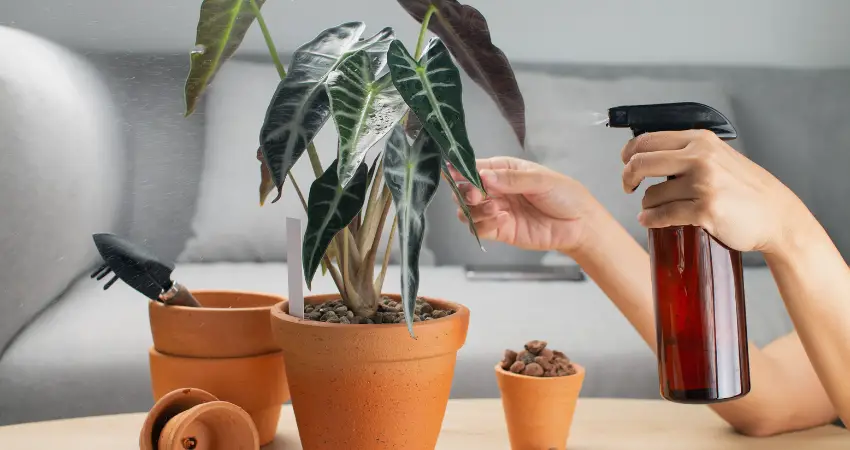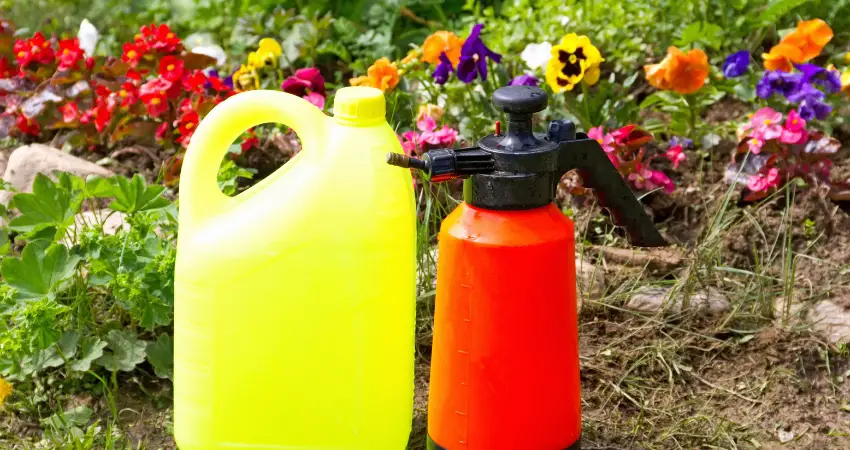Houseplants have become an integral part of modern home decor, bringing life, color, and a touch of nature into our living spaces. To keep these indoor green companions thriving, proper care and nutrition are essential. One highly effective way to provide your houseplants with the nutrients they need is through liquid fertilizers.
In this comprehensive guide, we will explore the benefits and types of liquid fertilizers, delve into the nutrient requirements of houseplants, and discuss various application methods. With this knowledge in hand, you’ll be well-equipped to support the health and vitality of your indoor garden, ensuring lush foliage and robust growth. Let’s embark on this journey to help your houseplants flourish!
Benefits of Liquid Fertilizers for Houseplants

As we explore the advantages of using liquid fertilizers for houseplants, it becomes evident that these formulations offer numerous benefits that can greatly impact the health and growth of our indoor green companions.
Rapid absorption
Liquid fertilizers are known for their quick absorption rates. Unlike granular fertilizers, which can take time to break down and become available to plant roots, liquid fertilizers are immediately available, ensuring a swift nutrient uptake. This allows for fast-acting results, which can be crucial in cases of nutrient deficiencies or when addressing specific plant health issues.
Easy application
Applying liquid fertilizers is a breeze. Their convenient handling and storage make it easy to measure and adjust dosages, ensuring that your houseplants receive the appropriate amount of nutrients. Additionally, liquid fertilizers are easily mixed with water, which simplifies the application process and helps distribute nutrients more evenly.
Balanced nutrition
Liquid fertilizers offer customizable nutrient ratios, allowing you to provide your houseplants with a well-rounded diet that promotes growth and health. You can tailor the nutrient mix to suit the specific needs of each plant, ensuring that they receive the nutrients required for optimal development.
Improved water solubility
One of the main advantages of liquid fertilizers is their high water solubility. This characteristic reduces the risk of nutrient lockout, a phenomenon in which certain nutrients become unavailable to plants due to imbalances in the growing medium. Liquid fertilizers’ water solubility ensures efficient nutrient distribution and absorption.
Environmentally friendly
Liquid fertilizers generate less waste and runoff compared to their granular counterparts. Many liquid fertilizers can also be produced using sustainable methods, making them an eco-friendly choice for conscientious plant owners.
Versatile use
Liquid fertilizers are suitable for a wide range of houseplant types and can be used in various growing mediums, including soil, coco coir, and hydroponic systems. This versatility makes them a popular choice among plant enthusiasts.
Types of Liquid Fertilizers

Read More: Organic Vs Synthetic Fertilizers
Organic
Organic liquid fertilizers are derived from natural sources and provide houseplants with essential nutrients while promoting healthy soil biology. Some common types of organic liquid fertilizers include:
- Seaweed extract: Rich in micronutrients and growth hormones, seaweed extract promotes strong root development and overall plant health.
- Fish emulsion: A nutrient-dense fertilizer derived from fish byproducts, fish emulsion provides a balanced mix of macronutrients and micronutrients.
- Worm castings: Produced by earthworms, worm castings are an excellent source of nutrients and beneficial microbes, which help improve soil structure and fertility.
- Compost tea: A liquid extract made from compost, compost tea delivers a range of nutrients and beneficial microbes to plants, enhancing their growth and resilience.
Synthetic
Synthetic liquid fertilizers are manufactured using chemical processes and often contain a blend of nutrients tailored for specific plant needs. They come in various formulations, including:
- Complete fertilizers: These products provide a balanced mix of macronutrients and micronutrients, ensuring that houseplants receive all the essential elements for healthy growth.
- Specialty formulations: Designed to address specific plant needs, these fertilizers may target a particular nutrient deficiency or promote certain aspects of plant growth, such as flowering or root development.
Understanding Nutrient Requirements
To effectively use liquid fertilizers, it’s important to understand the nutrient requirements of your houseplants. Nutrients are broadly divided into macronutrients and micronutrients, both of which play crucial roles in plant growth and development.
Macronutrients
Macronutrients are required in larger quantities by plants and include nitrogen (N), phosphorus (P), and potassium (K). Each of these nutrients serves a specific function:
- Nitrogen (N): Responsible for promoting leafy growth and the overall green color in plants.
- Phosphorus (P): Essential for root development, flowering, and fruiting.
- Potassium (K): Helps with overall plant health, disease resistance, and water regulation.
Micronutrients
Micronutrients are needed in smaller quantities but are still essential for plant growth. Some key micronutrients include:
- Iron (Fe): Aids in chlorophyll production and enzyme function.
- Manganese (Mn): Plays a role in photosynthesis, respiration, and nitrogen metabolism.
- Zinc (Zn): Helps with enzyme function and plant hormone production.
- Copper (Cu): Involved in photosynthesis and various enzyme functions.
- Boron (B): Assists with cell division and the formation of cell walls.
- Molybdenum (Mo): Facilitates nitrogen fixation and the utilization of nitrogen in plants.
Houseplant-specific needs
It’s crucial to consider the specific needs of your houseplants in terms of light, temperature, and humidity. Soil and growing medium also play a vital role in nutrient availability and plant health. Be sure to research the unique requirements of each plant species to create an optimal environment for growth.
Liquid Fertilizer Application Methods

There are several ways to apply liquid fertilizers to houseplants, each with its benefits and limitations. Let’s explore some common methods:
Soil drench
The soil drench method involves diluting the liquid fertilizer in water and pouring the mixture onto the soil surrounding the plant. This method allows for direct root absorption and is simple to execute. To achieve the best results, follow the manufacturer’s recommended dilution ratios and application frequency.
Foliar spray
Foliar spraying involves applying a diluted liquid fertilizer directly to the leaves of the plant. This method allows for rapid nutrient absorption through the leaf surface, which can be beneficial in cases of nutrient deficiencies. However, it’s important to use proper spraying techniques and avoid over-application, as this can cause leaf damage.
Root-zone feeding
Root-zone feeding targets the delivery of nutrients directly to the plant’s root system. This method involves carefully injecting a diluted liquid fertilizer solution into the soil near the roots, avoiding direct contact to prevent root burn. Root-zone feeding is an effective way to deliver nutrients, but it requires more precision than other methods.
Hydroponic systems
Liquid fertilizers can be used in various hydroponic systems, including nutrient film technique (NFT), aeroponics, and deep water culture (DWC). In these systems, plants receive their nutrients directly through water, making liquid fertilizers an ideal choice.
Monitoring and Adjusting Fertilization Practices

It’s essential to monitor your houseplants’ health and adjust fertilization practices accordingly. Keep an eye out for signs of nutrient deficiency or toxicity, and adjust fertilizer concentration and frequency as needed.
Signs of nutrient deficiency
- Yellowing leaves
- Stunted growth
- Leaf curling or wilting
Signs of nutrient toxicity
- Leaf burn or scorch
- Root damage
To maintain optimal plant health, assess your plants’ response to fertilization and consider seasonal variations in their nutrient requirements. Soil and growing medium testing can also be a valuable tool for maintaining proper nutrient levels.
By regularly analyzing the pH level and nutrient content of the growing medium, you can make informed decisions about fertilizer adjustments.
Soil and growing medium testing
- pH level analysis: The pH level of your growing medium can greatly influence nutrient availability. Ensure that the pH is within the optimal range for your specific houseplants to promote healthy growth and nutrient absorption.
- Nutrient content evaluation: By testing the nutrient content of your growing medium, you can identify any deficiencies or imbalances that may be affecting your plants. This information can guide you in adjusting your liquid fertilizer application to address these issues.
Conclusion
Liquid fertilizers offer numerous benefits and versatile application methods for houseplant enthusiasts. By understanding the nutrient requirements of your plants and employing appropriate application techniques, you can promote healthy growth and vibrant foliage. As you care for your houseplants, remember to monitor their health, adjust fertilization practices as needed, and always be mindful of their unique needs. Happy growing!
